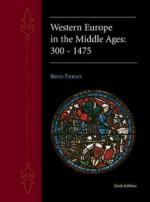|
This section contains 1,241 words (approx. 5 pages at 300 words per page) |

|
Processions. Medieval towns were the sites of many festivals, some of which included processions or parades. For example, a city commemorated the holy day of its patron saint or a day on which the town was delivered from plague or siege with a procession. It generally began at a fairly large church and wound its way through the main streets until it arrived at the primary church in the community. All participants were dressed in their finest clothing. If they were members of guilds, they might be required to wear cloaks or mantles that bore their guild crest, and frequently participants carried large candles, relics, and statues relevant to the theme of the procession. Precedence mattered a great deal, and it was not uncommon for groups to fight with each other over their places in the procession. Sometimes...
|
This section contains 1,241 words (approx. 5 pages at 300 words per page) |

|




